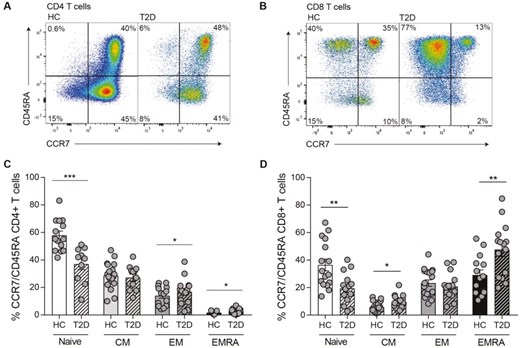-
PDF
- Split View
-
Views
-
Cite
Cite
Yang Zheng, Letter to the Editor: Type 2 diabetes is associated with the accumulation of senescent T cells, Clinical and Experimental Immunology, Volume 219, Issue 1, 2025, uxad079, https://doi.org/10.1093/cei/uxad079
Close - Share Icon Share
Dear Editors,
We recently read this article (Type 2 diabetes is associated with the accumulation of senescent T cells) published by EYM Lau on Clinical and Experimental Immunology in 2019 [1]. Combined with innate immune system (myeloid cells and macrophages) dysfunction, T cell and different phenotype of T cells have been demonstrated to play more essential roles in the pathological course of T2D [2]. Among of unclear underlying mechanisms, sencescent T cells which means the accumulation of highly differentiated with end-stage memory T cells as well as low-grade inflammation were hypothesized to be a candidate [3]. Meanwhile, cytokines in particular proinflammatory cytokines might be the drivers of CD4 + T-cell senescence and T-cell differentiation, which impact age-related T-cell alterations.
This article was very well conducted with quite amount of data. The certain amount of markers were used to define and differentiate sencescent and ageing T cells in both CD4+ T helper as well as CD8+ cytotoxic T cells, i.e. CD27, CD28 or CCR7, CD45RA together with CD57. They concluded that subjects with T2D showed higher circulating T cells and higher level of systemic inflammation, as well as increased number of senescent T cells in both the CD4 + and CD8+ T-cell compartment through flow cytometry.
However, we found that this original article contained some mistakes. First of all, CD4+ T-cell population was divided into four sub-populations based on the expression of surface receptors CCR7 (also named CD197 in the other literature [4]. In this case, central memory (EM, CCR7 + CD45RA−) T-cell population only has 5% in healthy control while it has 41% in T2D subjects, which were presented in Fig. 1a. I am convinced that it is a mistake here as EM T cells hold the majority of T-cell population.

Elevated levels of T cell senescence in people with T2D. The accumulation of senescent T cells in diabetes was defined using the markers C C chemokine receptor type 7 (CCR7) and CD45RA in T cells from patients with T2D and healthy controls aged > 55 years. Representative flow cytometry plots are shown for CD4+ (a) and CD8+ (b) T cells. Cumulative data of the phenotypical staining is shown for CD4+ (c) and CD8+ (d) CCR7/CD45RA defined T cell subsets. Data expressed as mean ± standard error of the mean (s.e.m.) of 16 healthy and 16 T2D donors. P‐values were calculated using a t-test..
Secondly, I would like to know how the authors transferred the original percentage from Flowjo to those bar graphs below, as the proportion of four T-cell subpopulation in Fig. 1c is not consistent with that in Fig. 1a for both groups.
We therefore contacted the authors and got their confirmations for those typos in Fig. 1, they also provided the revised correct results which were re-analyzed with FlowJo (Fig. 1).
In this paper, the authors further defined the CD28− population into EM and EMRA subsets using CCR7 and CD45RA and found both subsets to be elevated in T2DM. With the corrections, they concluded robustly that T2DM drives the differentiation of T cells giving rise to premature T cells senescence.
Conflict of interests
Not applicable.



